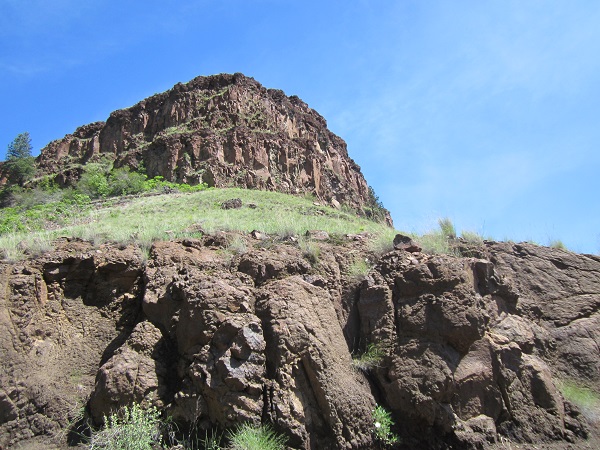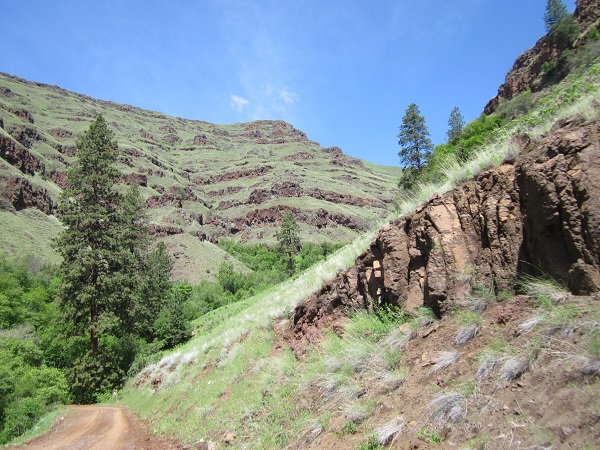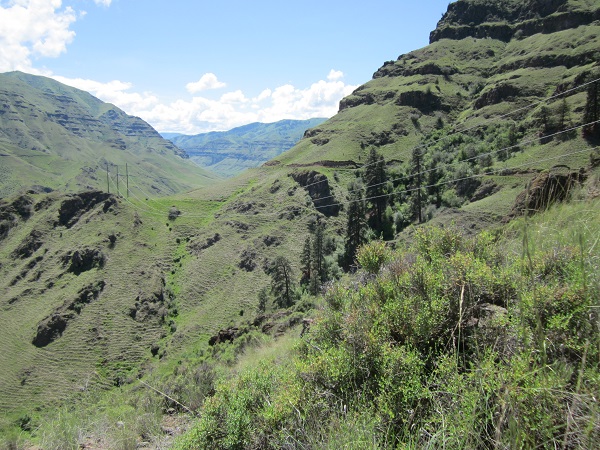The Oregon Project
For the best part of the year you have heard me talking about the big sound and drawing project I’ve been working on. The work is nearing completion with the installation almost built in Seattle and myself and Graham Byron flying out to assist the final install tomorrow. The work will open to the public on Friday 21st October as part of the big “9e2” exhibition in Seattle. Below is a piece I wrote last week and this should give you a good idea of how everything has come together over the last few years.
Background
I trained in Fine Art in the early 1980’s, attending Shrewsbury School of Art, Falmouth School of Art and Newcastle upon Tyne Polytechnic. In 1990 however, my sight which had until then been fine, deteriorated rapidly and by 1998 when I moved from Wales up to Ayrshire, I was officially registered as blind.
Throughout this period though, I was determined to continue doing my art and have, over the course of time, developed new ways of working that allow me to continue to paint and draw. I turned professional in 2009 and now work from my studio on Irvine Harbour side, exhibit my work regularly and received the Jolomo Award for Scottish Landscape Painting. Over the last few years I have been involved in several international projects that have involved creating works in Germany in 2010, Brazil in 2014 and now in Seattle in the USA.
In 2013, a chance meeting with Seattle based landscape photographer and independent film maker Daniel Thornton, (during the preview of my exhibition at ‘the gallery on the corner’ in Edinburgh) led to us working on a documentary project together. The documentary looks at my work as well as the role the visual impairment has played in its development. The documentary is built around a large drawing project I worked on here in Scotland in late 2014. I created a 5m long, 1.5m high graphite drawing based on Glen Rosa on the Isle of Arran, in the main gallery of the Harbour Arts Centre here in Irvine. I produced the drawing in the public gallery as part of a bigger exhibition of my work. I worked on the drawing each day and visitors to the centre could watch it develop. This was I guess, more a kind of performance piece. I also wanted the work to be more than a local event and as such arranged for each day’s work to be recorded on a time-lapse camera and then have it posted each evening on the Internet. The time lapse recordings were made by the resident sound engineer /technician, Graham Byron.
Around that time, I had become aware that the very limited sight I had, was gradually getting worse and I started to wonder what I would do if it became so limited that my drawings became very minimal. How would I continue to work as a professional artist? One of my ideas was to use sound in some way to supplement the visual image, but I had no idea how I might go about this. While talking with Graham during the big drawing project, I mentioned my idea for using sound and asked him how best I go about making the recordings. He was very enthusiastic and kindly lent me some sound recording equipment along with some basic instructions on using it. For the whole of 2015 I took the sound recorder with me on our regular walks into the Scottish Highlands and started to develop ideas for possible new work.
I had kept Dan Thornton up to date on this work and by chance he heard of an interesting project being developed by Microsoft researcher Neel Joshi. The idea was to use Microsoft Kinect technology to create a system to help visually impaired people interpret two dimensional images with sound. Neel had created a prototype and was looking to work with a visual artist who also worked with sound. Dan told him about me and put us in contact.
The Oregon Project
After a good deal of discussion in late 2015, Dan Thornton and I were invited to join the team working on the project, which itself had been established in order to take part in the big “9e2” arts and science exhibition taking place in Seattle in October 2016. A general view of the exhibition, its purpose and aims, can be found by visiting the website: www.9e2seattle.com .
My partner Nita and I flew out to Seattle in early May where we joined the full team to talk about the project, test the prototype and set plans for the work. We decided to try and create something that was more than just a rather blunt interpretive tool for visually impaired people. Instead we planned to try and create an art installation that was experimental, challenging and enjoyable for all concerned but that also had as an integral part of it…. an audio interpretive element that would allow visually impaired people to better interpret the purely visual side of the piece….. this being 3 large (8’ x 4’) pastel drawings.
Ever since first meeting with Dan Thornton, he had expressed an interest in seeing how I would interpret the NW American landscape and for this project he had organised a short artist’s residency for me at the Josephy Centre for Arts and Culture in the small town of Joseph in NE Oregon. After our initial meeting at Microsoft we travelled down to Joseph where we spent 8 days exploring the stunningly varied landscape. The plan was for me to gather as much information about it as possible and as such we were out in the landscape every day. I did many small sketches, we all took numerous photos and Dan and his assistant Cindy Apple recorded the process on film. We also made many sound recordings too. By the time we had returned to Seattle we had formulated a plan for the work. I would create three large pastel drawings based on three different views of the Hell’s Canyon region of Oregon. One based on the view from the canyon rim, one from a position well down in the canyon and one based on the view we had at the river’s edge in the base of the canyon.

Hell’s Canyon region, Oregon

Hell’s Canyon region, Oregon

Hell’s Canyon region, Oregon
As far as I understand it the Microsoft connect technology will recognise a person’s location within a three dimensional space. We would use this system to direct sounds to a viewer and these sounds would change according to their position in front of the drawing ….whether they are close to or further back from the surface of the drawing . The Kinect technology can also recognise a person pointing at different parts of the drawing and once again send a corresponding soundtrack. We decided that the work would have three different levels of sound:
Level 3: Furthest away from the drawing. Here you would hear sound tracks relating to the view depicted in the drawing and mixed from recordings we made out on location in the canyon.
Level 2: A position closer to the drawing. Here we have added computer generated tones to match the main blocks of colour within the drawings. You would hear the main colours.
Level 1: Very close to the drawing surface. In this position the sounds you would hear would be made from recordings of the actual drawing process ….you would be ‘in’ the drawing. These sound tracks are really quite abstract and relate directly to the different types of mark used in the creation of the drawings.
On returning to Scotland in late May, I started work on the three large drawings. I also spent many hours listening to the sound recordings Dan and I had made during our time in Oregon and selecting the elements that might best be used. At this stage of things we invited Graham Byron to join the team and together the two of us created 18 different individual soundtracks for each of the three drawings. I had no idea how we could mix these sound tracks and so it was great working with Graham who had been in the music industry as a sound engineer and musician for over 30 years. In short, it was like drawing with sound ….quite amazing.
Dan, Neel and a colleague of theirs, Ryan (along with several other folk) have been working away in Seattle designing the technical side of this project and they will shortly be starting to build the installation. Graham and I will be travelling out there on 17th October in time to help with the final installation ….adding the sound tracks to the work. The piece opens to the public, along with many other installations and performance projects …on 21st October.
This is a very experimental piece of work created by 4 people with very different skills……
Neel Joshi: Microsoft researcher ….this project was his idea.
Daniel Thornton: Independent film maker, landscape photographer and educator.
Graham Byron: Sound engineer and musician.
Keith Salmon: Visual and audio artist
This is a collaborative work and each element and area of expertise is as vital to the whole as the others. This is also a very experimental piece and we will only know how well it works once the installation is complete and we start getting feedback from visitors to the work. Hopefully everyone will be able to enjoy it.
Future plans
The Oregon Project is to return to Scotland in April 2017 where it will be exhibited in the gallery in Edinburgh University.
I think we are all hoping that The Oregon Project is just a start and that we will develop these initial ideas to create new and even more exciting pieces in the future. We are very keen to create a large Scottish sound drawing in 2017. Watch and listen to this space!

 Posted in
Posted in  Tags:
Tags: 